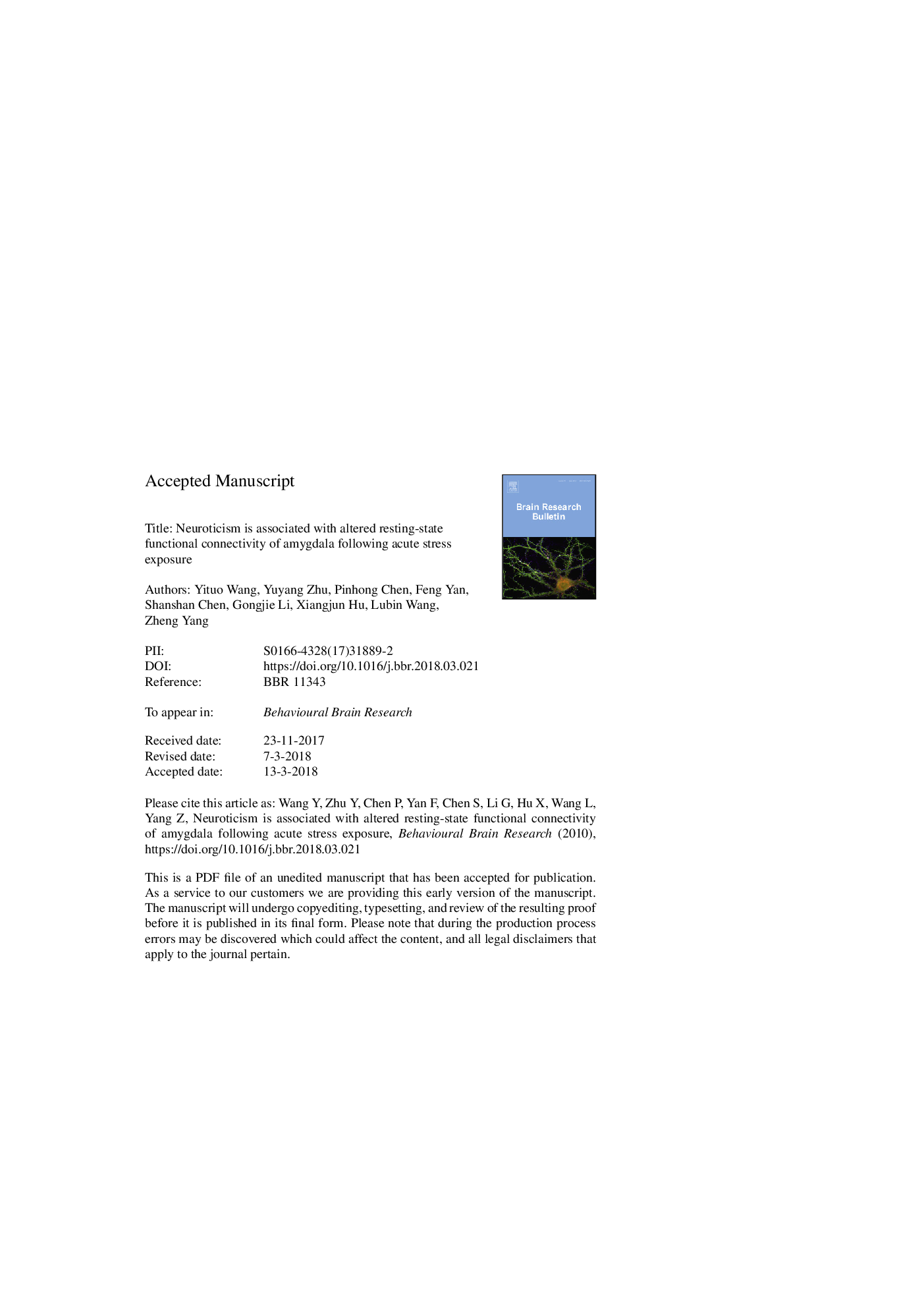| Article ID | Journal | Published Year | Pages | File Type |
|---|---|---|---|---|
| 8837794 | Behavioural Brain Research | 2018 | 34 Pages |
Abstract
The amygdala, a subcortical structure responsible for fear and vigilance, is central to the stress circuitry. Aberrant amygdala connectivity with the cortical and subcortical regions is found in patients with stress-related disorders, and in healthy subjects following acute stress exposure. However, the extent to which the stress-induced alteration of amygdala functional connectivity correlates with risk-related personality measures remains unclear. Using resting-state functional magnetic resonance imaging, we evaluated the effect of acute stress, induced by aversive movies accompanied by a mild electric shock, on the functional connectivity of the basolateral amygdala (BLA) and centromedial amygdala (CMA) in 35 healthy men, and assessed the association between changes in amygdala functional connectivity and individual differences in neuroticism. We found increased BLA functional connectivity with the posterior cingulate cortex/retrosplenial and increased CMA functional connectivity with the medial prefrontal cortex following acute stress exposure. Moreover, neuroticism was positively correlated with altered functional coupling of the basolateral subregions with the anterior insular cortex, dorsal anterior cingulate cortex, and pregenual anterior cingulate cortex, which are involved in salience processing. These findings suggest that neurotic individuals may be more prone to hypervigilance following acute stress, which may potentially link neuroticism to the neurobiology underlying increased susceptibility to stress-related disorders.
Related Topics
Life Sciences
Neuroscience
Behavioral Neuroscience
Authors
Yituo Wang, Yuyang Zhu, Pinhong Chen, Feng Yan, Shanshan Chen, Gongjie Li, Xiangjun Hu, Lubin Wang, Zheng Yang,
